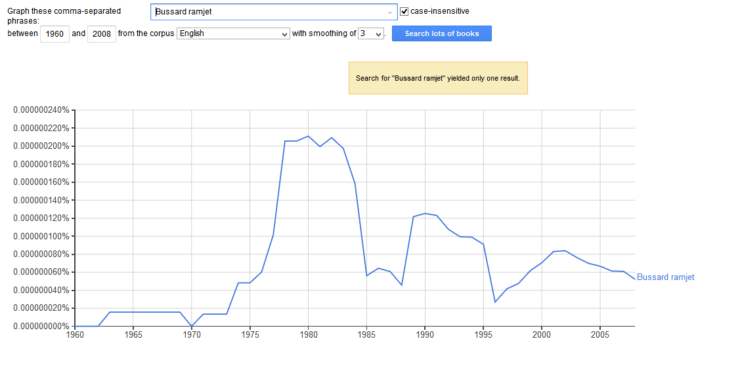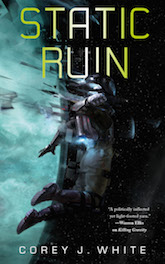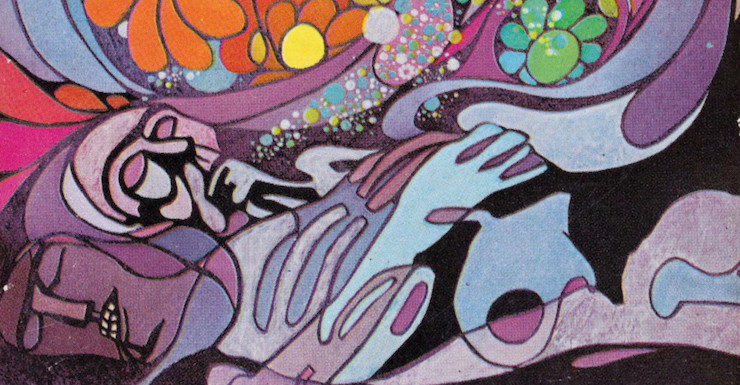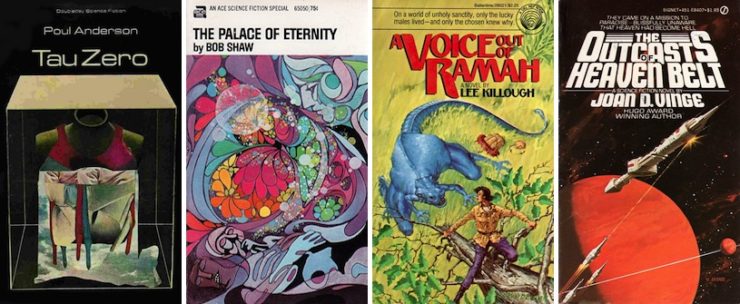It is customary for old folks (such as me) to fulminate loudly about change. The new is puzzling; loss of the old and the familiar is sad. What do I miss? The Bussard ramjet¹.
The Bussard ramjet purported to address two issues that would seem to prevent Nearly As Fast As Light (NAFAL) travel from becoming a reality: fuel and protection from the interstellar medium (ISM). As you know Bob, the ISM is the faint smear of hydrogen and other matter that is found in the near-vacuum of space. If you are going fast enough, the ISM will abrade and destroy your ship. But ISM can be your friend! Collect and compress the ISM, fuse some of the hydrogen, and use it as fuel. Any unused ISM can be ejected in the exhaust. So elegant!
The Bussard ramjet promised the stars, if one were willing to invest a little time. It took Magellan’s ships three years to sail around the world; one could reach Alpha Centauri in almost the same time. Without getting scurvy!
| Destination | Distance (Light Years) |
Time (Years) |
| Alpha Centauri | 4.3 | 3.6 |
| Tau Ceti | 11.9 | 5.1 |
| 40 Eridani | 16.3 | 5.7 |
| The Pleiades | 444 | 11.9 |
| Crab Nebula | 6,500 | 17.1 |
| Galactic Core | 28,000 | 19.9 |
| Andromeda Galaxy | 2,500,000 | 28.6 |
The near stars could be reached in only a few years, vast expanses of the Milky in about half a career. Even the nearer galaxies could be reached in less time than it took to go from Ferdinand de Lesseps’ initial vision to the actual Panama Canal. Not as convenient as any given episode of Star Trek, but nothing that would have daunted Zhang Qian.
Well…with one tiny catch: the times given above are those that would be measured by someone on the ship. Let’s add a column for how long the trips would take from the perspective of Earth.
| Destination | Distance (Light Years) | Ship Time (Years) | Earth Time (Years) |
| Alpha Centauri | 4.3 | 3.6 | 5.9 |
| Tau Ceti | 11.9 | 5.1 | 13.7 |
| 40 Eridani | 16.3 | 5.7 | 18.1 |
| The Pleiades | 444 | 11.9 | 446 |
| Crab Nebula | 6,500 | 17.1 | ~6,500 |
| Galactic Core | 28,000 | 19.9 | ~28,000 |
| Andromeda Galaxy | 2,500,000 | 28.6 | ~2,500,000 |
NAFAL trips mean crossing time as well as space. But that shouldn’t prevent exploration; anyone who would consider racing off that far into the future probably wouldn’t have friends and relatives about whom they deeply cared in any case.
Bussard ramjets seemed an ideal solution to the problem of sub-light interstellar travel. Science fiction authors soon noticed.

The classic Bussard ramjet novel is, of course, Poul Anderson’s Tau Zero. What was for other authors a convenient prop was one of the centerpieces of Anderson’s novel. The Leonora Christina sets out for Beta Virginis, a nearby star. A mid-trip mishap robs the ship of its ability to slow down. Repairs are impossible unless they shut down the ramjet, but if the crew did that, they would instantly be exposed to lethal radiation. There’s no choice but to keep accelerating and hope that the ship will eventually encounter a region in the intergalactic depths with a sufficiently hard vacuum so that the ramjet could be safely shut down. Even if they did find such a region, the crew is still committed to a journey of many millions of light years, one that will forever distance them from their own time.
Even before Tau Zero, Bussard ramjets were everywhere. Larry Niven’s A Gift From Earth feature an egregiously hierarchical society that is toppled thanks to a package delivered by robotic ramship. Jo Walton’s review of that novel is here.
One of the odder novels in which Bussard ramjets play a central role is Bob Shaw’s 1969 The Palace of Eternity. In that book, humans find themselves locked in merciless battle with the alien Pythsyccans. The Pythsyccans limit themselves to conventional fusion rockets, which gives humanity a considerable edge—or so the humans think. In fact, the aliens have a reason for making the choices they do. Former soldier Mack Tavenor will find out why, but the path that takes him to that destination is uncanny indeed.
The Urashima effect of NAFAL travel—either through velocity time dilation or gravitational time dilation—can isolate human colonies from Earth and other advanced worlds. In Lee Killough’s 1979 A Voice Out of Ramah, the isolation of backwater world Marah ends when envoys bearing the means of interstellar teleportation arrive. It’s not until two crew members—one man, one woman—set down on Marah that they learn that Marah is home to a disease that kills the majority of boys at puberty. Bad news for the off-worlder man, who is not immune. Still, a reader might wonder why if 10% of the boys survive, their sons do not share their resistance. The answer to that question shapes the plot.
Similarly, the protagonists in Joan D. Vinge’s 1978 Outcasts of Heaven Belt set out to make contact with the nearby (in galactic terms) Heaven Belt, only to discover that in the centuries since their home system last got word from Heaven Belt, that asteroid-based constellation of cultures had discovered the hard way why war between artificial habitats is a very bad idea. The handful of survivors have lost even basic technologies like fusion; the visiting starship is therefore a treasure that people will kill to possess.
Perhaps the coolest aspect of NAFAL travel was something called the Starbow. Curious what the stars would look like to a traveller moving close to the speed of light, Ing E. Sänger’s calculations suggested that the ship would perceive itself to be preceded by a rainbow ring. Frederik Pohl borrowed the idea for the title of his 1972 Hugo- and Nebula-nominated and Locus Award-winning story “The Gold at the Starbow’s End,” in which elite travellers are granted an unusual voyage of discovery.
Buy the Book


Static Ruin
So, what happened, you ask? Why this lament? Well, people like T. A. Heppenheimer took a closer look at the physics of the Bussard ramjet. Alas, the ramjets seem to work better as brakes than as propulsion systems. There are workarounds for some of the issues with the tech, but the new designs aren’t those wonderful one-gravity-forever independent spacecraft that featured in so many stories I read in my teen years. The Bussard ramjet’s descendants will have much smaller accelerations, hence their peak velocities will be too low to generate significant relativistic effects. Some designs depend on active support from their home system while in flight.
In fact, it even turned out that Sänger made some erroneous simplifying assumptions and there is no Starbow. Bah.
A more detailed discussion of ramjets and their rise and fall can be found at the exemplary Atomic Rockets site.
There is an alternative to the Bussard ramjet that offers many of its advantages (at least as far the needs of science fiction authors go)—one that has inexplicably only been used by a single author to my knowledge. What that alternative is, however, will have to wait for another essay.
1: Not only ramjets. I miss proper hay bales. A hay bale should be just a bit too heavy for a kid to lift without hurting their back; it should be held together with two or three strands of twine that slice through youthful palms like garrote wire. Those hay bales built character! But I don’t think I can convince Tor.com to pay me to complain that modern bales are just plain wrong.
In the words of Wikipedia editor TexasAndroid, prolific book reviewer and perennial Darwin Award nominee James Davis Nicoll is of “questionable notability.” His work has appeared in Publishers Weekly and Romantic Times as well as on his own websites, James Nicoll Reviews and Young People Read Old SFF (where he is assisted by editor Karen Lofstrom and web person Adrienne L. Travis). He is surprisingly flammable.











